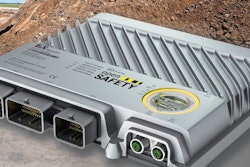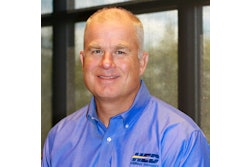
responses submitted by Sean Grieve, Business Development Manager, B&R Industrial Automation
Automation & Smart Systems
What are customers/the industry looking for in smart systems, and how is your company going about providing those features?
More OEM customers are looking to enhance machine controls platforms with higher hardware performance capabilities in order to handle ever-increasing demands associated with topics like functional safety, autonomous operation, machine-to-machine, and machine-to-cloud communication. While these advances in hardware performance are very important, they are also very interested in advances on the software side. Development platforms that offer interfaces with model- and simulation-based tools for automatic code generation is just one example of that interest.
B&R recently announced the safety rated X90 controller as a new addition, and multiple product releases are planned over the coming year, so watch this space. On the software side we will continue to expand the mapp (modular applications) technology offering for a wide range of functionalities. Mapp technology not only shortens development time for the OEM, but also provides a range of functionality and features which also benefit end users. Examples include web-based visualization, user and access management, alarm handling, messaging and many more.
How do you see smart systems continuing to impact the industry, and what new benefits will they bring?
Safety, productivity and overall equipment effectiveness (OEE) will all be further improved. The challenges associated with a limited supply of well-trained and experienced operators will be offset by equipment and systems that are much more intuitive to operate and maintain. Examples will include smart systems for things like condition monitoring, intelligent maintenance, and automatically generated alarms, text messages and embedded documentation or video to help with maintenance and part change requirements. Unexpected downtime and repairs of large equipment costing many thousands of dollars will be less common as the industry more and more appreciates the value of intelligent maintenance technology.
What, if any, new opportunities is your company seeing in regards to creating automated systems as the technologies which enable them continue to advance?
B&R has been providing automation and machine control solutions in a wide variety of different industries for over 40 years. For off-highway equipment applications, the combination of high-performance hardware, a powerful programming platform and those years of experience means that OEMs have a resource to help them innovate through a long-term partnership. The opportunities come from a variety of markets including road construction, mining, agriculture, lift and access, material processing and recycling.
What challenges are there yet to implementing more advanced automation capabilities and what is needed to overcome those challenges?
Advances in technology mean that there is an increasing amount of data moving around the control networks of the machines. CANbus technology has served the industries very well for over 20 years, but it is likely only a matter of time before some variety of Ethernet becomes more common. It would be best if the path forward with this involves a consensus of the OEMs and technology providers to ensure agreement on a standard. Without agreement, innovation and expected benefits associated with all things autonomous and connected will remain in the future. The main industrial automation providers have joined forces to ensure there isn’t a repeat of their industrial fieldbus wars of the past. The OPC Foundation is the body through which they will collectively ensure progress. The OPC Foundation Ethernet initiative is called OPC UA over TSN (Time Sensitive Networking). It represents a number of standards initiatives under IEEE 802.1 that provide determinism for applications including control and audio visual streaming. TSN has long been considered the logical successor to CANbus for automotive applications. It’s a fine example of co-operation for the greater good. Interested parties from the off-highway world should check it out.




















